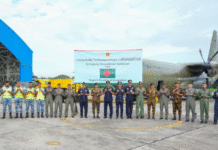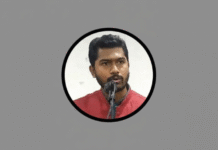Thirty-one people have died throughout the country in 17 days of political violence following the government’s decision to barricade the Bangladesh Nationalist party leader Khaleda Zia at her Gulshan party office and the police’s refusal to allow the party to hold a public meeting in Dhaka.
Since January 5, when Khaleda announced a non-stop indefinite road-rail-waterway blockade throughout the country, 17 members of the public have suffered fatal injuries, apparently as a direct result of activities undertaken by opposition pickets seeking to ‘enforce’ the blockade.
In the same period, 13 opposition activists have died, seven killed by law enforcement agencies, three by government party activists and another three from their own picketing activities.
The remaining three deaths to make up the 33 total include the killing of two government party activists, and one person who died from a head injury where the circumstances are unclear.
The number of dead opposition activists include Imrul Kayes and Nuruzzaman Jonny who were killed in Dhaka in recent days in what the police referred to as ‘gunfights’ but the families claim as ‘extra-judicial’ killings.
The police headquarters however told New Age that, as of January 19, there had been 23 deaths in ‘blockade related violence’, as well as around 300 injuries.
At a press conference on Monday, following the removal of the barricade around BNP’s office in Gulshan, Khaleda Zia denied that BNP activists were carrying out any arson attacks or killing people, and instead blamed the governing party.
‘Awami League is itself involved in these attacks. We are not attacking people with gunpowder or petrol bombs. It is the Awami League who is carrying out these attacks, taking the police with them,’ she said.
‘Awami League has a history that it carries out attacks and kills common people,’ she added.
Amongst the 17 members of the public who died, 10 suffered fatal burn injuries when pickets threw bombs at vehicles or set fire to cars and buses.
Six of those who died from burn injuries were travelling on a public bus on the Rangpur-Dhaka highway in the early hours of January 14.
According to eye-witnesses, a petrol bomb was thrown onto the bus causing a fire that spread quickly with passengers desperately trying to escape by breaking through the bus windows. Seven other passengers on the bus received serious injuries.
Six other members of the public died when they were directly attacked by picketers or the vehicles in which they were travelling lost control after coming under attack. These six included 22 year old truck helper Atikur Rahman who died on January 12, when he was hit by a brick thrown at his truck.
The survey of newspaper reports also found that seven of the 13 opposition party activists who died in the last two weeks were shot by the police or the Rapid Action Battalion.
This included Md Rubel, a member of the BNP youth front in Begumganj in Noakhali and Md Mohsin, an activist of the Jamaat-e-Islami student wing in the same area who were
both shot dead on January 7 during a protest in the district.
Witnesses said the blockade supporters, which included Rubel and Mohsin, had laid siege to a level crossing and set fire to vehicles. When the police arrived at the scene, they came under attack from brickbats thrown at them, and the police then opened fire resulting in the two deaths.
Three other opposition activists were killed apparently by government alliance activists, including Rakib Hossain and Raihan Hossain Rana in Natore on January 5 during a clash between the BNP and AL activists.
Source: New Age









